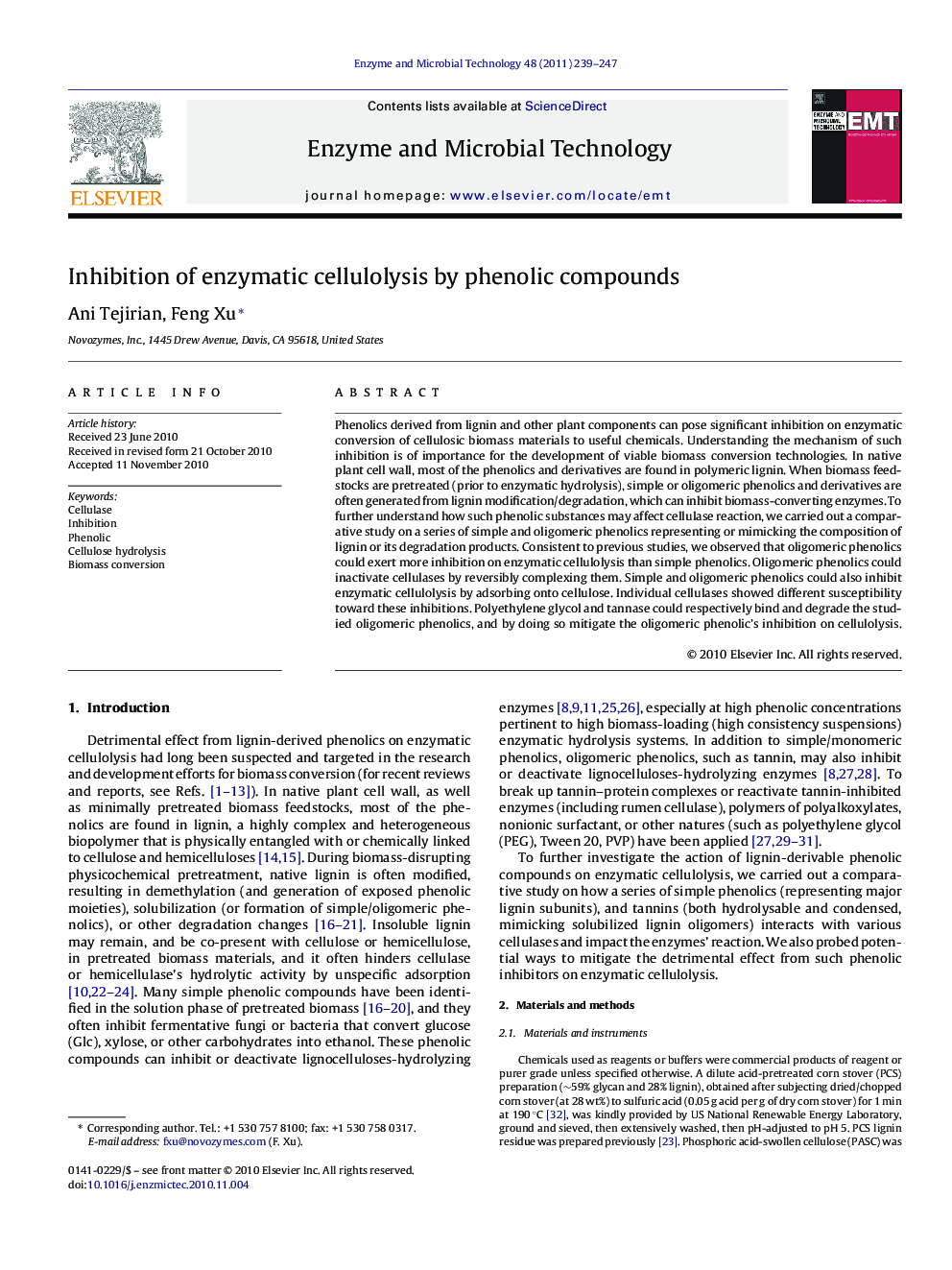| Article ID | Journal | Published Year | Pages | File Type |
|---|---|---|---|---|
| 10233095 | Enzyme and Microbial Technology | 2011 | 9 Pages |
Abstract
Phenolics derived from lignin and other plant components can pose significant inhibition on enzymatic conversion of cellulosic biomass materials to useful chemicals. Understanding the mechanism of such inhibition is of importance for the development of viable biomass conversion technologies. In native plant cell wall, most of the phenolics and derivatives are found in polymeric lignin. When biomass feedstocks are pretreated (prior to enzymatic hydrolysis), simple or oligomeric phenolics and derivatives are often generated from lignin modification/degradation, which can inhibit biomass-converting enzymes. To further understand how such phenolic substances may affect cellulase reaction, we carried out a comparative study on a series of simple and oligomeric phenolics representing or mimicking the composition of lignin or its degradation products. Consistent to previous studies, we observed that oligomeric phenolics could exert more inhibition on enzymatic cellulolysis than simple phenolics. Oligomeric phenolics could inactivate cellulases by reversibly complexing them. Simple and oligomeric phenolics could also inhibit enzymatic cellulolysis by adsorbing onto cellulose. Individual cellulases showed different susceptibility toward these inhibitions. Polyethylene glycol and tannase could respectively bind and degrade the studied oligomeric phenolics, and by doing so mitigate the oligomeric phenolic's inhibition on cellulolysis.
Related Topics
Physical Sciences and Engineering
Chemical Engineering
Bioengineering
Authors
Ani Tejirian, Feng Xu,
